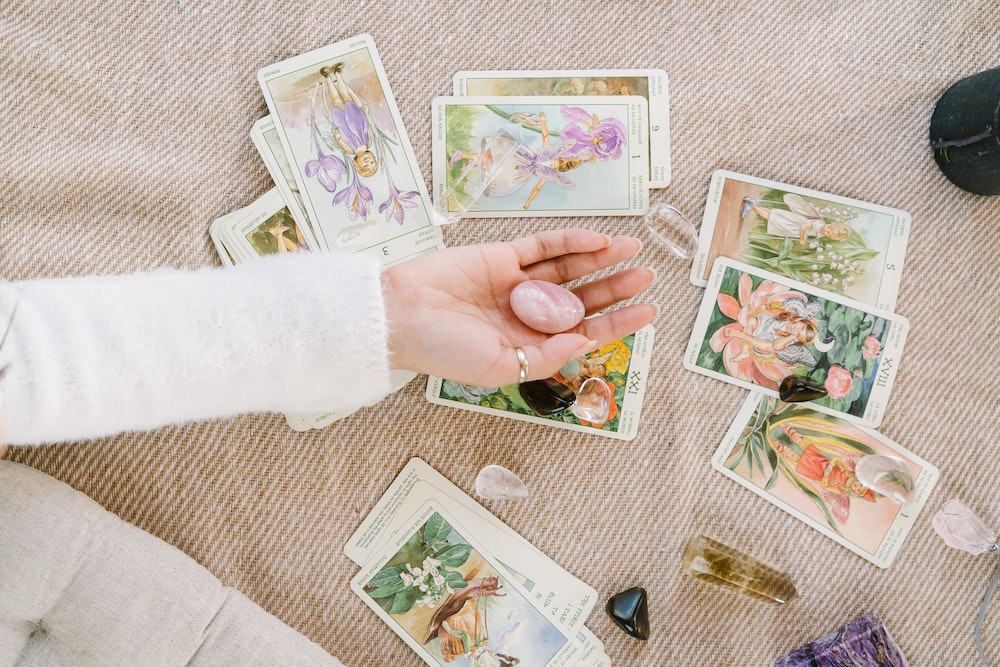The world of tarot, shrouded in mystique and ancient symbolism, often finds itself the subject of scrutiny, curiosity, and sometimes, controversy. Over the years, tarot has been labeled many things—some see it as an occult practice, while others consider it an insightful tool for introspection or even divine guidance. But one of the most fascinating aspects that is less often explored is the relationship between tarot and religion. How do these seemingly disparate belief systems intersect, clash, or complement each other? This article aims to delve deep into this intriguing nexus, examining the historical, ethical, and psychological facets of tarot in the context of religious belief systems.
The Historical Relationship between Tarot and Religion
The history of tarot is one replete with varying narratives, shrouded in mystery, and influenced by numerous cultures and religions. Originating in 15th-century Europe as a simple card game, tarot evolved into an esoteric tool associated with divination. Interestingly, these cards were initially accepted, and even endorsed, by religious institutions of the time, mainly the Catholic Church.
As tarot cards began to gain popularity, they started incorporating imagery and archetypes from a plethora of sources, including but not limited to:
- Christian Iconography: Such as angels and the devil, heaven and hell.
- Egyptian Mythology: Including the use of symbols like the Sphinx.
- Kabbalistic Principles: Particularly in the symbolism of the Major Arcana.
But as the Enlightenment era dawned, the religious establishment began to distance itself from tarot, often condemning it as heretical or associating it with paganism. The complex relationship between tarot and religion thus appears to be rooted not only in their shared history but also in the evolution of religious thought itself.
The Role of Archetypes: Understanding Tarot through Religious Symbols
When you take a close look at a standard tarot deck, you will find a striking number of cards that seem to echo religious symbols and archetypes. The concept of archetypes, initially proposed by Carl Jung, refers to the recurring symbols, themes, and motifs found universally in human culture and religion. In the context of tarot, these archetypes serve as keys that unlock various layers of human experience and spirituality.
For example:
- The Hierophant: Often seen as a bridge between heaven and earth, this card is strongly reminiscent of the Pope in Catholicism or a spiritual guru in Eastern philosophies.
- The Devil: Represents temptation and moral struggle, similar to the concept of Satan or evil forces in various religious texts.
- The Lovers: Symbolizes choices and moral dilemmas, often paralleled in religious stories like Adam and Eve.
Understanding these archetypes does not merely involve recognizing religious symbols; it requires a profound comprehension of the intricate weave of spirituality, ethics, and shared human experience. Moreover, this symbology opens up avenues for dialogue between tarot practitioners and religious scholars, allowing for mutual respect and deeper understanding.

Ethical Considerations: Tarot and Religious Sensitivity
Navigating the landscape where tarot and religion overlap brings about various ethical considerations. These considerations largely revolve around respect for individual belief systems and avoiding cultural appropriation. The gravity of these matters cannot be overstated, particularly in our diverse global society where a single misstep can ignite significant controversy.
One common ethical concern is the inappropriate or uninformed usage of religious symbols within a tarot reading. If, for instance, a tarot reader uses cards that have borrowed elements from a religion they do not personally follow or understand, they risk trivializing deeply-held beliefs and customs.
Furthermore, how tarot readers approach their practice in a religiously diverse setting can set the tone for acceptance or contention. Sensitivity to religious beliefs while practicing tarot includes:
- Acknowledging the Origin: Knowing the roots of various symbols and explaining these to clients who may be from different faith backgrounds.
- Consent and Comfort: Always ensuring that the person receiving the reading is comfortable with the religious undertones or symbolism involved.
- Avoiding Dogma: While tarot can be spiritual, imposing a particular religious narrative upon a reading could be inappropriate and exclusionary.
By adhering to these ethical guidelines, tarot practitioners can contribute to fostering an environment of mutual respect and understanding, allowing for a more nuanced interaction between tarot and various religious beliefs.
Tarot Deck Diversity: Representation of Different Faiths
In recent years, the world of tarot has seen an upsurge in the diversity of decks available, catering to an array of cultural and religious backgrounds. Gone are the days when the Rider-Waite-Smith deck, deeply rooted in Judeo-Christian symbolism, was the only option for enthusiasts and professionals alike. The tarot landscape now boasts a rich tapestry of decks that include references to Hinduism, Buddhism, Indigenous spirituality, and even atheistic viewpoints.
This inclusivity serves multiple purposes:
- Enhanced Accessibility: Individuals from varying religious backgrounds can now find a tarot deck that speaks to them on a spiritual level.
- Educational Value: These decks can be enlightening for people looking to understand how different faiths perceive elements common to human experience, like death, love, and morality.
- Fostering Open Dialogue: A diverse range of tarot decks allows for conversations that might not have occurred in a more monolithic setting, thereby enriching our collective spiritual understanding.
This proliferation of diverse tarot decks represents a significant stride towards acknowledging and appreciating the multifaceted nature of human spirituality. It shows that both tarot and religion are not static constructs but are ever-evolving, influenced by each other and by the broader currents of human thought and culture.

The Theological Debate: Is Tarot Compatible with Religious Beliefs?
The question of compatibility between tarot and various religious systems is a hotbed of theological debate. This conversation is often polarized, with some religious authorities outright condemning tarot as incompatible with the tenets of their faith, while others adopt a more nuanced view, considering the context and intent of tarot use.
There are religious perspectives that denounce tarot as heretical or blasphemous. For example, some Christian denominations view tarot as a form of divination, thus incompatible with biblical teachings. In Islam, too, practices like tarot could be considered ‘haram’ or sinful, as they might be perceived as attempting to predict the will of Allah.
On the flip side, there are spiritual paths like Neo-Paganism, Wicca, or even certain liberal Christian groups that find room for tarot within their religious frameworks. These groups often interpret tarot not as a tool for divination but as a means for introspection or communion with the divine.
The key takeaway here is that the compatibility of tarot with religious beliefs largely depends on the interpretations and teachings of the specific religious or spiritual path in question. Each offers a unique lens through which the role and ethics of tarot are evaluated.
A Psychological Perspective: Tarot as a Tool for Spiritual Self-Discovery
While the focus so far has been primarily on how tarot interacts with organized religion, it’s equally vital to explore its psychological dimensions. Tarot, for many people, is less about predicting the future and more about understanding themselves on a deeper, more spiritual level.
Carl Jung, the Swiss psychiatrist, was one of the first to propose that tarot could serve as a psychological tool. According to Jung, the cards could function as “archetypal mirrors” that reflect the complexities of the human psyche. Jung’s theories have given rise to a modern form of tarot interpretation that shifts the focus from divination to personal growth and self-discovery.
In therapy settings, some psychologists use tarot as a projective technique, helping clients articulate thoughts or feelings they might find challenging to express otherwise. Here, tarot becomes a secular, therapeutic tool that transcends any particular religious framework.
Tarot’s psychological utility doesn’t negate its spiritual or religious aspects but adds another layer of complexity to this ancient practice. It shows that tarot, like religion, can be multifaceted, serving different purposes for different people—whether that’s spiritual guidance, ethical reflection, or psychological insight.
In sum, the relationship between tarot and religion is both intricate and multifaceted. It ranges from historical alliances and ethical considerations to the enriching role that each can play in deepening our understanding of the other. Through a respectful and nuanced exploration of these intersections, one can better appreciate the complexities and depths that both tarot and religion offer to the human experience.









